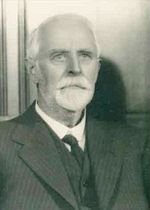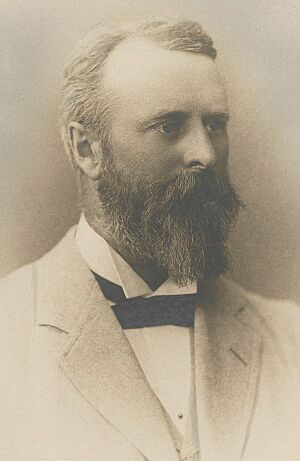Richard Sanders Rogers facts for kids
Quick facts for kids
Richard Sanders Rogers
|
|
|---|---|

Richard Sanders Rogers (in 1932)
|
|
| Born | 2 December 1861 |
| Died | 28 March 1942 (aged 80) Adelaide
|
| Nationality | Australian |
| Citizenship | Australian |
| Alma mater | University of Edinburgh |
| Scientific career | |
| Fields | Medicine, Botany |
Richard Sanders Rogers (born December 2, 1861 – died March 28, 1942) was an important Australian doctor. He was also a world expert on orchids from Australia and nearby islands.
He discovered and described more than 80 types of Australian orchids. He also found three new types from New Zealand and 30 from New Guinea. Dr. Rogers even identified three new groups (called genera) of orchids. He worked as a special doctor at the Adelaide Hospital. He was also part of the hospital's main group that made decisions.
Dr. Rogers might have been one of the first doctors to use a special calming technique during surgery. This technique helped a patient stay relaxed and comfortable during an operation.
Contents
About Richard Sanders Rogers
Early Life and Education
Richard Rogers was one of nine children born to Joseph and Ann Rogers. He went to school at Pulteney Street School in Adelaide, which is now called Pulteney Grammar School. He then studied at the University of Adelaide. In 1881, he finished his first degree with top marks.
After university, he taught at Prince Alfred College in Adelaide. He then won a scholarship to study medicine at the University of Edinburgh in Scotland. He became a medical doctor in 1887. That same year, he married Jean Scott Patterson in Edinburgh. Soon after, they returned to Australia, and he began working as a general doctor.
Military Service and Public Roles
During World War I, Dr. Rogers was in charge of the Keswick Base Hospital. This was a military hospital in Adelaide. He held the rank of lieutenant-colonel in the army.
He also served on important public groups. From 1929 to 1931, he was on the board for the Public Library, Museum, and Art Gallery. He was also part of the Justices' Association from 1914 to 1915. Dr. Rogers was a member of the South Australian Literary Societies' Union. He was even its president from 1909 to 1911.
Dr. Rogers' Medical Work
Dr. Rogers was a special doctor at the Royal Adelaide Hospital. He worked there from 1897 until he passed away. He was also on the hospital's board and the South Australian Medical Board. He was a member of the Royal Australasian College of Physicians.
He was in charge of two mental health hospitals: Enfield Receiving House and Northfield Mental Hospital. He also worked as a special doctor for all the state's mental health places.
Dr. Rogers was interested in using calming techniques to help patients feel better. He was also the first doctor in South Australia to bring in and use an X-ray machine. He encouraged other doctors to use X-rays to help find out what was wrong with patients and during operations.
In 1919, he became a teacher at the University of Adelaide. He taught about forensic medicine, which uses medical knowledge in legal cases. He kept this job until he retired in December 1939, when he was 78 years old.
Discovering Orchids: Botany
In his free time, Dr. Rogers studied orchids. He became a world expert on the orchid types found in Australia and nearby areas. Even though he didn't have formal training in plant science, he wrote 25 papers about orchids between 1906 and 1932.
He collected more than 5,200 plant samples. He even built his own collection of dried plants, called a herbarium. He also wrote letters to other orchid experts in England, Holland, and America. For almost 30 years, an artist named Rosa Fiveash helped him. She drew many of the orchid types he found and identified.
In 1905, he became a member of the Royal Society of South Australia. He was its Vice President in 1914 and President in 1920. In 1924, he also became a member of the Linnaean Society.
Dr. Rogers wrote to other orchid experts like Herman Rupp, Edith Coleman, William Nicholls, Cyril Wright, and Rudolf Schlechter. His work helped them describe many new orchid types.
Two orchids have been named after him:
Here are some of the many orchids that Dr. Rogers himself discovered and named:


